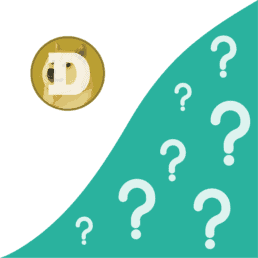What is Litecoin?
Charlie Lee, an ex-google employee perceived some flaws and areas for improvement in the Bitcoin blockchain when he analysed the fledgling technology. He designed Litecoin to overcome these flaws and launched the new cryptocurrency Litecoin back in 2011.
The Litecoin network is approximately 4 times faster than Bitcoin with a new block added to the Litecoin blockchain every 2.5 minutes in comparison to every 10 minutes on the Bitcoin network. To strengthen and ensure the sustainability of Litecoin, its maximum supply is capped at 84 million coins. This means once 84 million Litceoins have been mined there will be no more supply, helping to maintain and hold value.
So that’s a quick overview of Litecoin, if you’re interested in some of the finer details keep on reading:
Decentralising proof-of-work using Scrypt
Proof-of-work, as the name suggests, involves solving complex cryptographic hashes to validate a block. However, miners can exploit the proof-of-work consensus by forming mining pools, thus allowing block processing to be controlled. This in turn can result in centralising what should ultimately always be a decentralised function, which is a major threat to the blockchain network.
To combat this issue, Litecoin uses the ‘memory-hard problem‘ called Scrypt in its proof of work algorithm. In simple terms the ‘memory-hard problem’ stops ‘wealthy’ participants from manipulating the blockchain as they are limited by computational memory. Additionally, it stops miners collaborating as they cannot solve cryptographic hashes in parallel as again it requires too much memory.
Enabling cross-chain exchange
Litecoin supports the ‘Atomic Swap‘ feature enabling the cross-chain exchange of crypto coins without any middleman.
Traditionally, if you have to exchange one cryptocurrency for another you’d need to pay an exchange platform. However, with Litecoin and the implementation of ‘atomic swaps’, you could simply swap coins without any unnecessary transaction fees.
Increasing the transaction volume using SegWit
As we explained earlier, Litecoin processes a block every 2.5 minutes as opposed to a block being processed every 10 minutes on the Bitcoin network. How does it achieve this?
Litecoin uses what we call Segregated Witness (SegWit) functionality to achieve a more efficient process to deliver more transactions. A transaction block contains – sender’s public address (input) and receiver’s public address (output). 65% of the block is occupied by a part of the input (signature), SegWit works by stripping the signature thereby making more room for transactions.
To put it simply, SegWit changes the way data is stored in a block. This helps to run more transactions at any given time. Win win!
Preventing flood attacks
Flooding the blockchain network with spam transactions is known as a flood attack. Litecoin safeguards itself from flood attacks as it charges the sender a fee for every output created.
If hackers attempt to flood the network with thousands of spam transactions, they have to pay an unfeasible amount which restricts and demotivates anyone trying to spam the Litecoin network.
Now you should have a solid understanding of Litecoin and the vision of its creator.
Learn more about cryptocurrency
What is Bitcoin?
What is crypto
What is Ethereum?
What is crypto
What is Cryptocurrency?
What is crypto
What is a Blockchain?
What is crypto
What is Money?
What is crypto
What is DeFi?
What is crypto
What is Chainlink?
What is crypto
What is a Whitepaper?
What is crypto
What is an ERC-20 Token?
What is crypto
What is Proof of Stake?
What is crypto
What is Proof of Work?
What is crypto
What is Stellar?
What is crypto
What is Tezos?
What is crypto
What is a Stablecoin?
What is crypto
What is Cardano?
What is crypto
What is NEO?
What is crypto
What is Monero?
What is crypto
What is Bitcoin Cash?
What is crypto
What is Polkadot?
What is crypto
What is Basic Attention Token?
What is crypto
What is Solana?
What is crypto
What is Binance Coin?
What is crypto
What is Dogecoin?
What is crypto
What is a Bitcoin ETF?
What is crypto
What is a NFT?
What is crypto
Sign up to our newsletter
What is cryptocurrency?
Where to buy cryptocurrency?
How to buy cryptocurrency?
Manage cryptocurrency
Disclaimer
Our publications do not offer investment advice and nothing in them should be construed as investment advice. Our publications provide information and education for investors who can make their investment decisions without advice. The information contained in our publications is not, and should not be read as, an offer or recommendation to buy or sell or a solicitation of an offer or recommendation to buy or sell any cryptocurrency. Prices of cryptocurrency may go down as well as up and you may not get back the original amount invested. You should not buy cryptocurrency with money you cannot afford to lose. To see our full disclaimer click here.

























